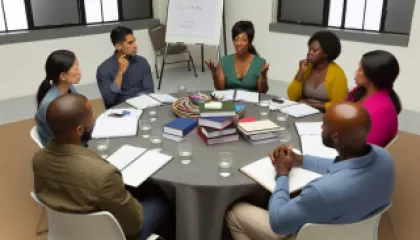Seringkali, kita lupa bahwa menjadi orang tua itu seperti jongler yang sedang beraksi di atas tali—seimbang sambil memastikan segalanya tidak jatuh. Nama saya
Wulan Kusnadi, dan selama 4 tahun terakhir, saya telah menggabungkan kecintaan saya pada teknologi dengan praktik terapi untuk membantu orang tua menjalani peran mereka dengan lebih mindful dan efektif.
Saya percaya bahwa dunia digital yang kita tinggali sekarang ini tidak hanya menawarkan tantangan, tapi juga peluang yang luas untuk belajar dan berkembang. Itulah mengapa dalam sesi terapi saya, saya sering memanfaatkan aplikasi mindfulness, game interaktif, dan platform media sosial sebagai alat bantu untuk orang tua dan anak-anak dalam menghadapi isu-isu seperti exposure anak terhadap media, serta mengelola persaingan antar teman sebaya.
Dalam praktik saya, saya mengedepankan pendekatan yang bersifat kolaboratif. Saya yakin bahwa setiap keluarga unik dan membutuhkan solusi yang disesuaikan dengan kebutuhan khusus mereka. Dengan menggunakan teknologi, saya bisa menyediakan sumber daya yang fleksibel dan mudah diakses untuk mendukung orang tua dalam perjalanan pengasuhan mereka.
Saya juga sangat memperhatikan bagaimana mindfulness dapat diintegrasikan ke dalam kehidupan sehari-hari orang tua. Menggunakan aplikasi meditasi atau teknik relaksasi berbasis VR (Virtual Reality), saya membantu orang tua menemukan momen kedamaian di tengah kesibukan mereka. Ini bukan hanya tentang menemukan waktu untuk diri sendiri, tapi juga tentang menjadi teladan positif bagi anak-anak dalam mengelola emosi dan stres.
Tidak ada dua hari yang sama dalam dunia pengasuhan. Saya menyadari betul akan hal itu. Oleh karena itu, saya selalu berusaha untuk tetap update dengan perkembangan terbaru dalam teknologi dan psikologi anak, sehingga saya dapat memberikan dukungan yang relevan dan inovatif kepada setiap keluarga yang saya bantu.
Jika Anda merasa tertantang oleh kecepatan dunia modern dan ingin menemukan cara baru untuk menghubungkan kembali dengan keluarga Anda, mungkin saya dapat menjadi mitra dalam perjalanan Anda. Bersama-sama, kita dapat mengeksplorasi cara-cara kreatif untuk meningkatkan kesejahteraan mental dan emosional keluarga Anda, dengan memanfaatkan teknologi dan pendekatan yang tepat.
- Wulan Kusnadi











